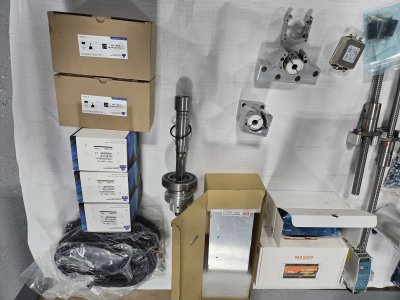I've been toying with the idea of building another CNC machine. Name a CNC mill. I have my CNC router which is amazing for wood and even aluminum in a pinch though the high speed spindle is bit of a challenge. And steel is pretty much a non-starter.
My Weiss VM32 mill (essentially a CX601/PM30) is a conversion candidate but I wanted to retain some semblance of 'manual' control to do simple operations like facing or side milling without having to do CAD/CAM.
Spent two hours with @jcdammeyer this morning talking CNC, steppers, servos, control software etc.
Had a lightbulb moment when John set up a facemill and quickly surfaced a block of aluminum using simple commands into the MDI interface on LinuxCNC.
That was was the part that I was missing; how to do a simple job like that without being able to turn handwheels.
So I'm starting to research what I need to convert my mill to CNC.
Stay tuned.
My Weiss VM32 mill (essentially a CX601/PM30) is a conversion candidate but I wanted to retain some semblance of 'manual' control to do simple operations like facing or side milling without having to do CAD/CAM.
Spent two hours with @jcdammeyer this morning talking CNC, steppers, servos, control software etc.
Had a lightbulb moment when John set up a facemill and quickly surfaced a block of aluminum using simple commands into the MDI interface on LinuxCNC.
That was was the part that I was missing; how to do a simple job like that without being able to turn handwheels.
So I'm starting to research what I need to convert my mill to CNC.
Stay tuned.
Last edited:



